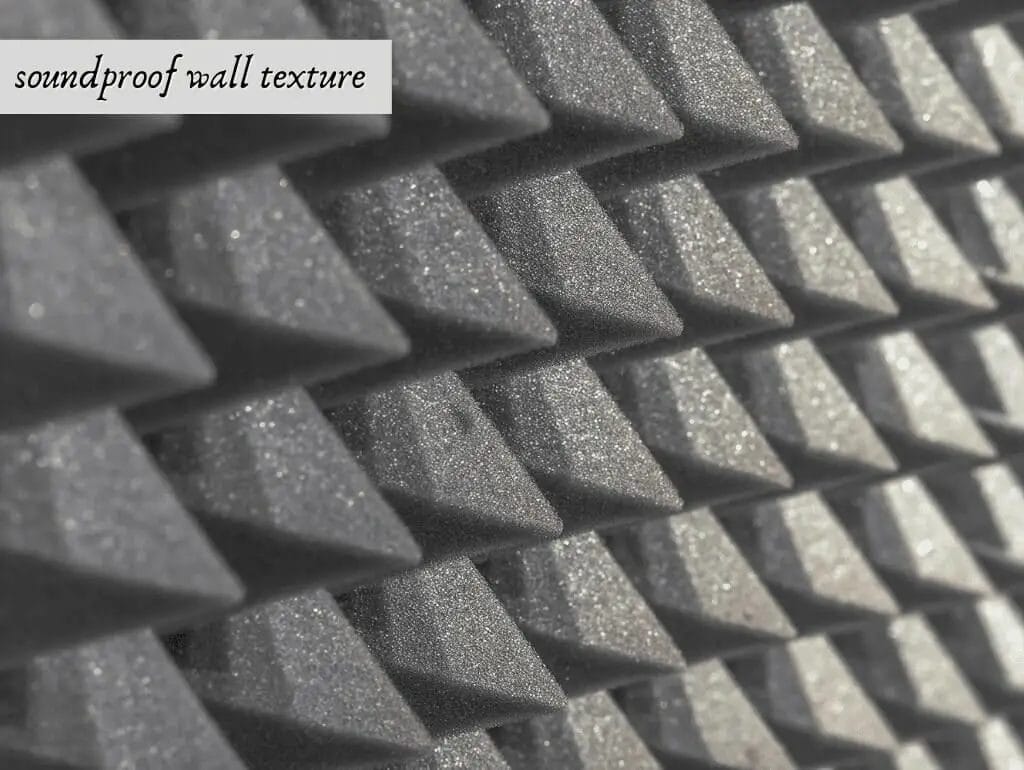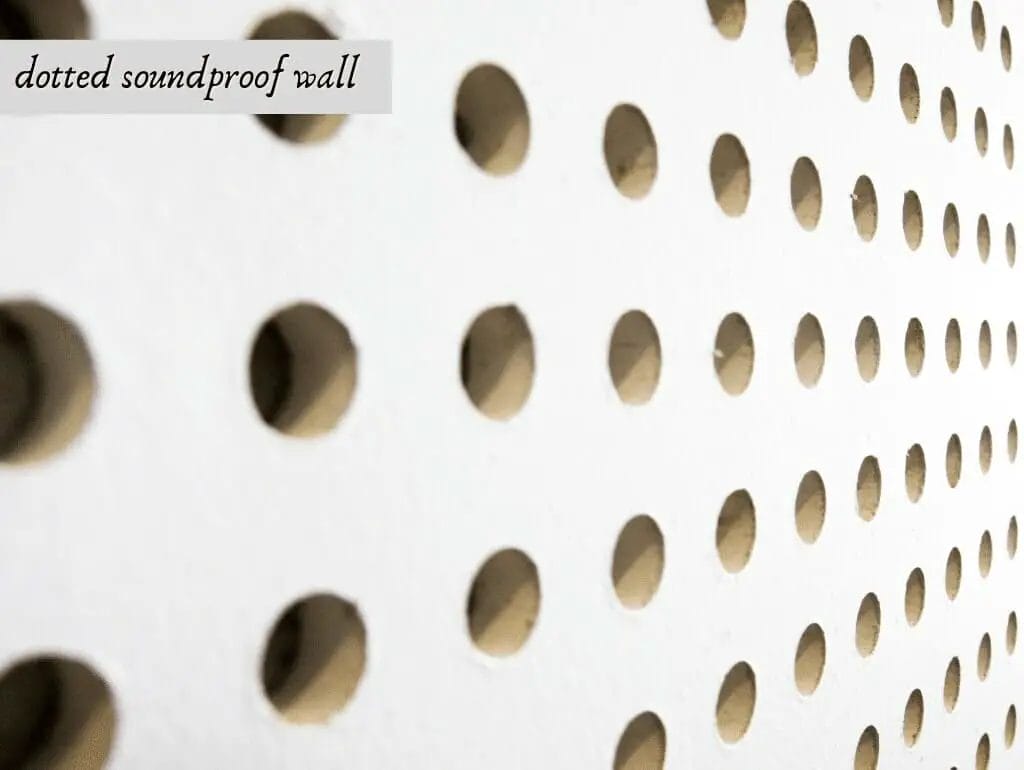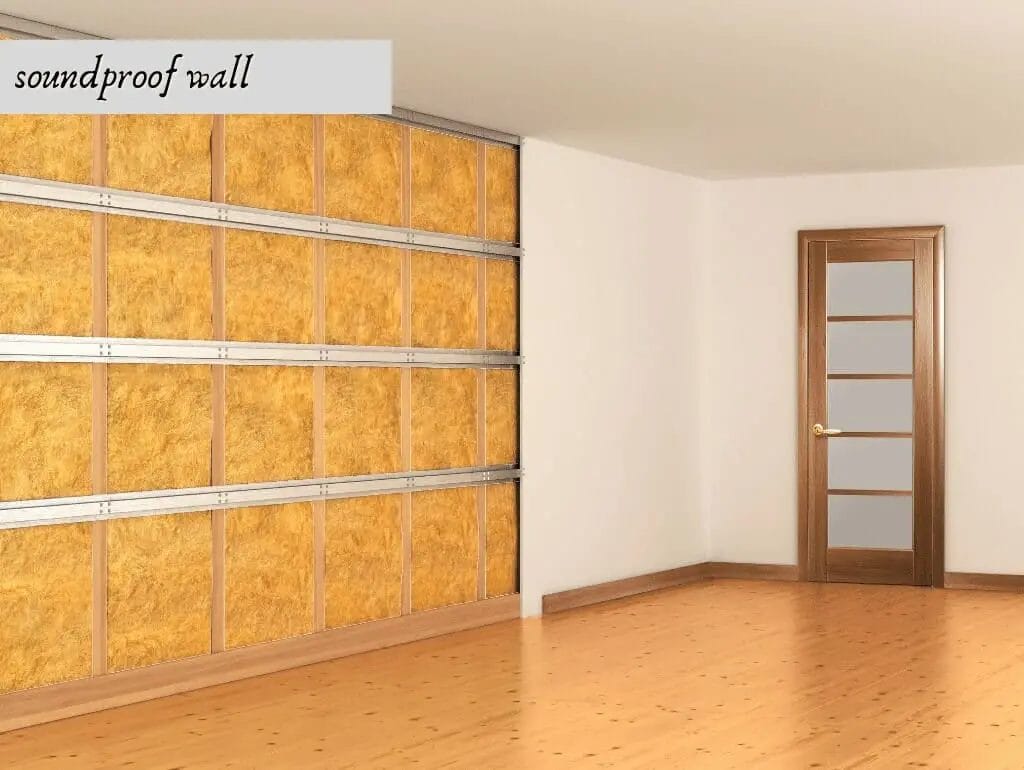Whether you are in your home or office, you will have to deal with some noise. What matters is the magnitude to cope with. Some sounds can disturb your peace and concentration.

Indoor noise is inevitable. It could come from the outside or inside the room.
You could be living near neighbors who love making annoying sounds like slamming the doors or horning their cars loudly. Rented apartments are notorious for this kind of noise. Overactive kids can also be a nuisance. The sounds made by their screams and floor stamping can make you go nuts.
Luckily, there are ways to soundproof walls to prevent noise from entering your room. Most techniques used in blocking sound through the wall can be expensive. It is the reason we’ve prepared this guide. In this article, you shall get insight into various ways you can soundproof your wall cheaply.
You will also learn everything you need to know about soundproofing a wall. Take a scenario where you have rented a house, and the owner has refused you to alter the walls. What happens when the noise is too much from outside, and the possibilities of moving out are almost nil?
The only solution is to become creative and soundproof the walls without modifying them. The methods used should be temporary in case you have to move. They also should be cheap if you don’t have the money. Also, the house you live in could be yours, but you don’t have the budget to perform the expensive soundproofing of your walls.
The cheap wall soundproofing methods are as effective as the expensive ones if you do it right. Before we jump into these pocket-friendly sound prevention techniques, let’s look at the reasons for soundproofing your wall.
Why Do You Need to Soundproof Your Walls?
I. Peace and Comfort
If you live near the city, the traffic noise can be loud. It is worse when you have a child, elderly, or an invalid in the house. The sounds from the outside can interfere with their sleep and comfort. You also cannot concentrate or enjoy a peaceful rest.
The only solution is to soundproof the walls of your house. It will reduce or eliminate the outside noises.
II. To Maintain Noise
Suppose your house or room produces many disturbing sounds; you could soundproof the walls to prevent them from going into other peoples’ houses. Those people with studios or love playing loud music need to protect their neighbors from the noise.
Because you are looking at a cost that will not break your budget, you need to consider some things before soundproofing your wall. They include the following;
What to Consider Before Soundproofing Your Wall
a. Your Wall’s Weak Points
When you identify the weak points on your walls, you will concentrate on those areas only and not the entire wall, saving you on the insulating materials. You could focus on the window or door to reduce the noise coming through instead of soundproofing the entire wall. As a result, you will avoid unnecessary expenses.
Doors and windows are the weakest points on a wall that leak noise. Because they come small, you end up using fewer materials and spending less.
b. Noise Source
When you soundproof the entire wall, it may cost you much. Remember, you aim to block noise in and from your room in the cheapest manner possible. It is, therefore, important to note the source of the noise. Could it be from a crack, hole, or gap on the wall?
When you know where the sound is passing through, you get to concentrate on that area only. It will save you materials, money, and time. Knowing the noise source will also guide you on the materials to buy for blocking the noise.
By knowing the noise types that pass through your wall, you can identify the source. For a better understanding, the following are sound types that travel through your wall.
Noise Kinds
i. Impact Noises
When items hit the wall or each other, they produce the impact noise. This kind of noise will pass through any solid surface like your wall. Impact noises are blocked using various techniques.
ii. Airborne Sounds
As their name suggests, these types of noises travel through the air. It could be people talking, a child crying, sounds from TVs and music systems, and many more. The advantage with airborne sounds is that they only pass through your wall if it has cracks or the sound is very thin.
Sealing any openings or holes will block such noises from outside into your room.
Thickening your wall will also help. We shall discuss various thickening techniques in this article.
iii. Vibration or Structural Noise
Appliances produce structural noise or vibrations. Because vibrations or structural noises travel through solid structures, they will enter your room through the wall. Great examples of structural sounds are noises from washing machines, dishwashers, bass sounds, refrigerators, and other heavy noises.
The best way to dampen or eliminate this kind of noise is by soundproofing the appliances and moving them away from the wall.
c. Wall Thickness
If your walls already exist, you will need to determine their thickness to know the kind of soundproofing method and material to use. In case you are in the process of building the wall, consider its thickness if you are thinking of soundproofing it.
Thick walls block sounds effectively. Airborne noises do not go through thick walls completely. Though vibration and impact noises may find their way through thick walls, they arrive when weak and barely unnoticeable. It also depends on the materials used in making the wall. Some wall materials block them entirely from passing through.
d. Material Used
Walls get made with different materials. Some are good conductors of sounds, while some block the noise. When building your new wall, consider the materials you will use. Whether you want to prevent noise from coming into or leaving the room, consider using building materials that do not allow any noise to pass through.
If your wall exists, check out the material used in its making to know what to use to reinforce the wall. Use backup materials that will prevent sounds from passing through the wall. Some walls may need intense reinforcement, and others less. In doing so, you will avoid buying excess or unnecessary materials, saving you money and time.
e. Wall Type
It is important to know the kind of wall you want to soundproof. For a better understanding, check out the various types of walls your house can have herein below;
Various Wall Types
Wall types can either be permanent or temporary. They can also come in various designs. Despite their durability and style, they come in two types;
1) Load-Bearing
It is the kind of wall you will find in apartments or story buildings. Load-bearing walls get designed to hold the weight of the house above. Therefore, sturdy materials like bricks, concrete, steel, or wooden beams get used in their making.
2) Non-Load Bearing
They are walls that do not hold or support floorings and structures above. Most constructors use them to divide rooms. That is why they are also referred to as ‘curtain walls’ or panel partition. Materials used in their making could be sheet glass, terracotta, steel panels, façade bricks, and wood.
When you know the kind of wall you are dealing with, soundproofing becomes easy. You can soundproof a wall from the inside, outside, or both sides. It depends on its design, location, and the type of sounds coming and going out of your room.
After considering the above measures and taking precautions, you now need to start soundproofing your wall. Use the following guide to block noise to and from your walls cheaply.
Ways of Soundproofing Your Wall Cheaply
1. Adding Dense Mass
Since you want to minimize the cost of soundproofing your wall, you will need to look for cheap and easily available materials to add to your wall’s density. Don’t go shopping for them; you can use your blankets and sheets. Alternatively, use low-cost materials like soundproof paint. They are also ideal to use if you don’t have spare blankets or sheets to use.
The only problem with this technique is that your wall may look awful due to the pinned sheets or blankets. But that shouldn’t bother you if you need a quiet room affordably. The sheets and blankets used should be thick for optimal results.
Because of the heavy mass, the room develops and maintains heat. You wouldn’t want your room to be that hot during summer. The best time to use this method is during the cold season. If you want to soundproof your room totally, consider the floor.
Protect noise from traveling through your floor by placing a carpet or rug. While soundproofing your wall using this method, consider the weak areas and the noise sources. Concentrate more on those areas.
2. Seal the Cracks
Cracks are another source of noise in our homes. They allow sounds to pass through the walls into our rooms. Even the tiniest spaces, holes, and gaps allow sound to pass through. The best way to seal such noise is by covering the cracks using soundproofing sealant or caulk.
Buying the sealant shouldn’t bother you because it costs a peanut. Cracks are common in wall edges and room corners. Search them all and apply the sealant. When all holes, gaps, and cracks on the wall get sealed, the noise coming in and leaving the room falls drastically.
3. Soundproof the Door Using Strips
If your door has a space underneath it, the sound will pass through. A gap or crack below your door is another way for noise into your room. The light coming through your door from its bottom part indicates enough space for sound to pass through.
Investigate whether it’s just a gap between your door and the floor or a crack. Whatever it is, you need to seal it. Otherwise, soundproofing your wall and leaving the door is useless. You will still struggle with noise in and out of your room.
Use adhesive strips to cover the space beneath your door. The strips block any noise from escaping or entering the room. It sweeps the floor when you open or closes the door.
4. Repairing All Places That Leak Noise
After adding mass to your wall and sealing the door space, fix all places that allow sound in and out of your rooms. Take your time, for they are tricky to find. Such sound leaks include loose switches, floorboards, and gaps in the windows.
Like mentioned before, adhesive strips, sealant, and duct tape will do an incredible job in sealing them. They all cost a few coins.
5. Rearranging Your Furniture
This method will cost you nothing. It only needs your time, energy, and creativity. Here is what you can do;
- Look for furniture you can place against your wall. Great examples are closets and bookshelves. They work great on walls that separate your house from the hallway, streets, and other noisy rooms.
- Put more stuffin your room. Many items will help reduce or eliminate echo that amplifies sounds in an area.
- Sofas and armchairshelp transfer noise from one room to another if placed against the wall. `If you have to use them in your room, place them at the center. Otherwise, it would work better if you remove them from your space.
6. Use Soundproof Decorations
You may want to decorate and soundproof your house simultaneously but don’t have the budget. The cheapest way to do it is by using soundproof decorations. You will have killed one bird using one stone, saving you money.
Put hanging art on your wall. The thick types will make your space look beautiful and block noise from escaping or entering your room. Decorative quilts also work like magic in making your space cozy, comfortable, and blocking noise.
If the hanging arts are not your type, try putting thick wallpaper on your wall. As long as these decorations are thick enough, they will block noise from leaving or entering the room. The denser and thicker the material is, the better.
7. Use Foam Panels
Most homeowners think that foam panels are expensive but are wrong. You don’t need to break a bank to own some. If you are on a low soundproofing budget, they are ideal to use. Foam panels come in various sizes and designs. You can easily access them and find the ideal ones for your wall.
Because they come in various patterns and colors, you can use them instead of wallpapers. Your wall will look fabulous and block sounds from within and outside.
8. Use Acoustic Fabric Panels
Though they cost a little more than the foam panels, they are still very cheap. They entail a wooden frame wrapped in fabric, making it very useful in absorbing noise. Please place it in strategic areas on your wall where noise is likely to travel through.
9. Hang Soundproof Curtains
Soundproof curtains get designed to hang on windows and doors to block sound. But you can also hang them along your wall. They work best when hanged on a rod. If you are not willing to part with your money for a rod, this option may not work out best for you. Curtain rods and installing them may come with an added budget.
As illustrated above, there are various ways of preventing sounds from and into your room. The methods described above cost nothing or a few dollars. They are ideal to use in a new or existing wall.
Conclusion
Noise can disturb our peace and comfort while relaxing indoors, as explained above. Sound travel through solid surfaces into and out of our rooms. It means sounds from the next room or outside can get heard in your room. Fortunately, there is a way of blocking such noise from entering your room. You can also prevent sound from leaving your room and disturbing your neighbors.
As illustrated above, you can use various techniques. Some methods are costly but very effective. But if you are on a budget, you can use the methods discussed above. Some will require your time and energy only, while others will use your few coins. What’s impressive about the above soundproofing methods is that they are effective despite being cheap.




